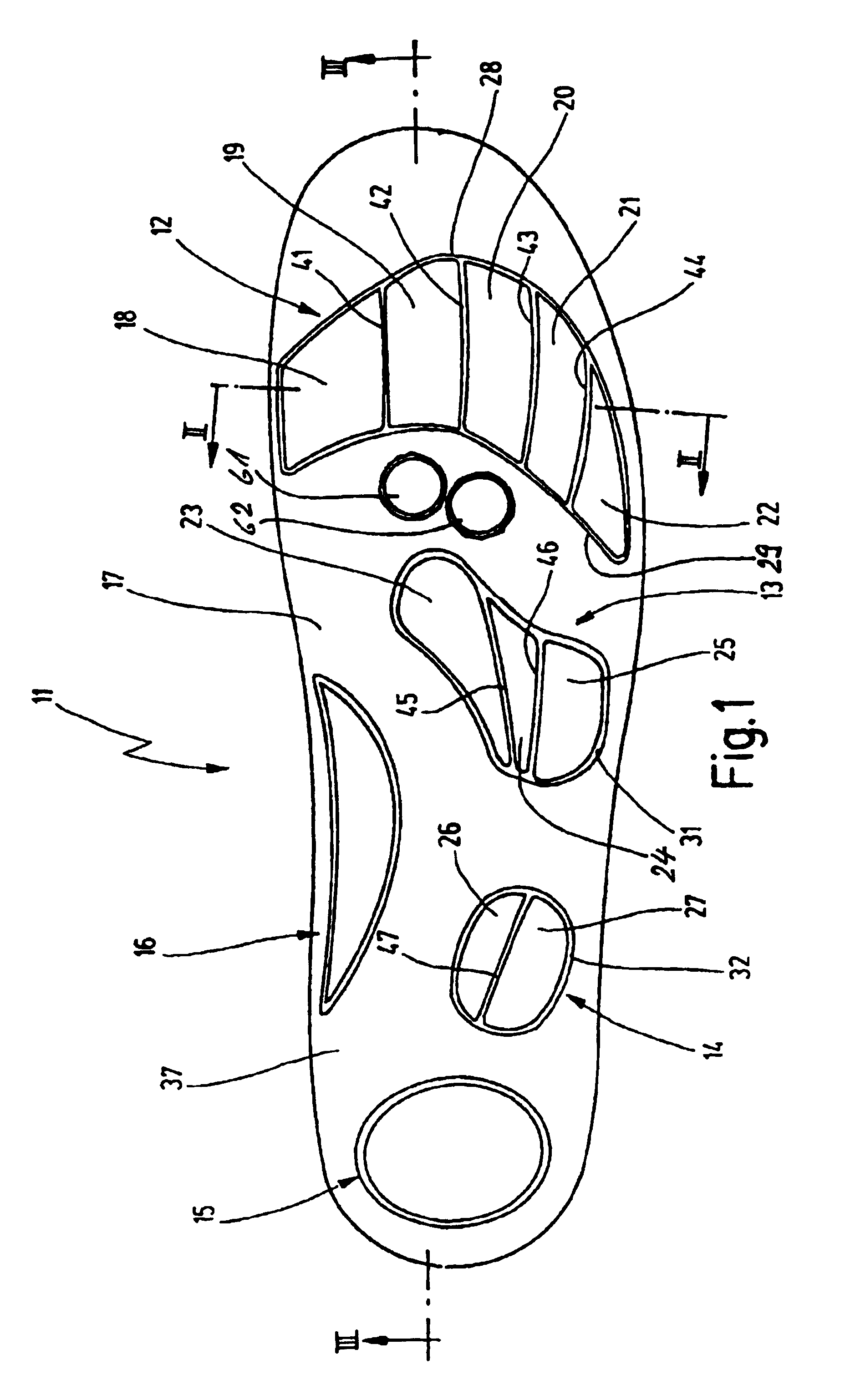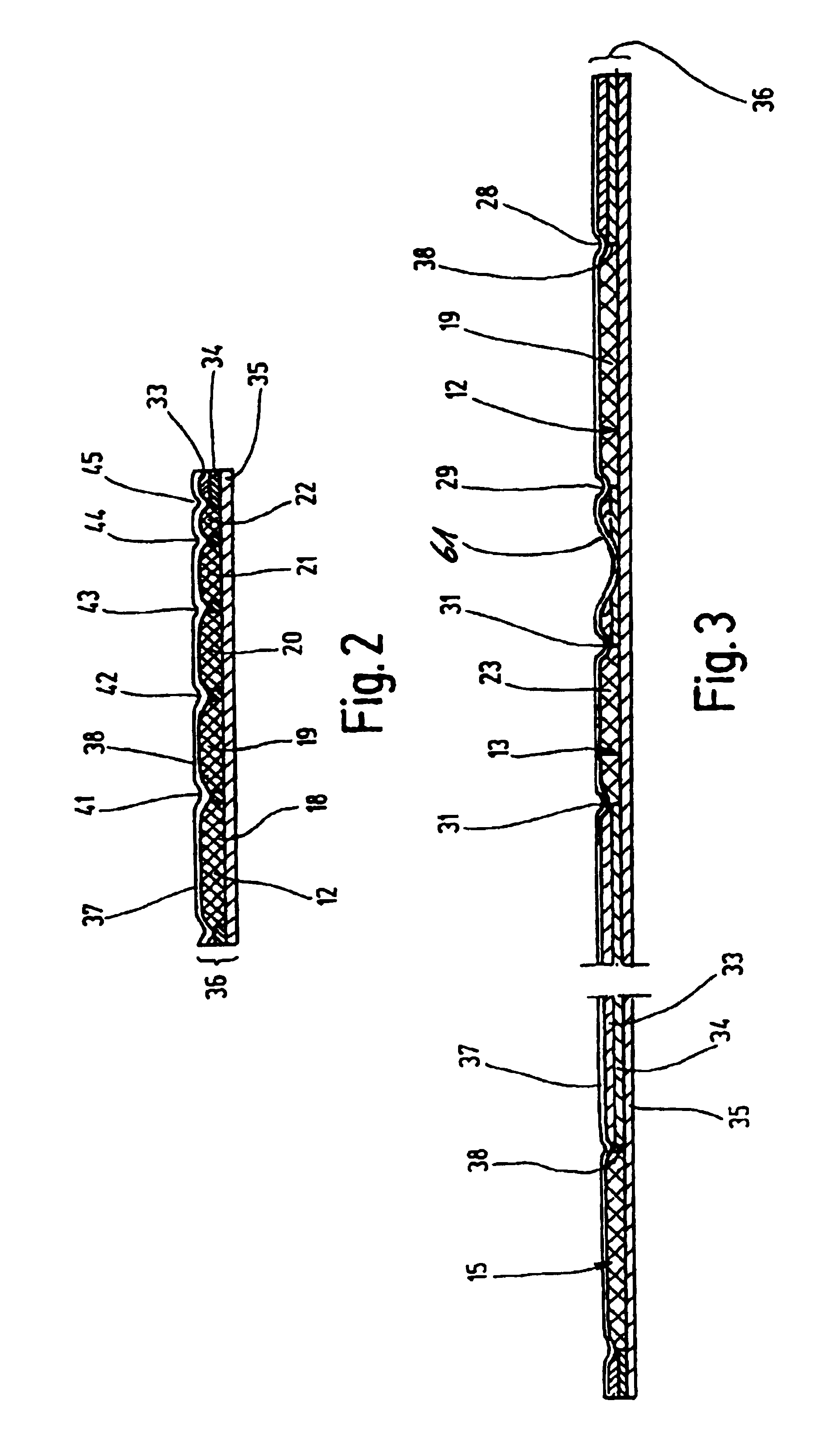Shoe insole for diabetics
a technology for diabetics and insoles, applied in the field of shoe insoles, can solve the problems of insufficient capacity of valves in veins to close, tissue and in particular the skin not being adequately supplied with oxygen, and affecting the comfort of wearing, and achieve the effect of positive influen
- Summary
- Abstract
- Description
- Claims
- Application Information
AI Technical Summary
Benefits of technology
Problems solved by technology
Method used
Image
Examples
Embodiment Construction
[0018]The shoe insole 11 and 111 shown in the drawings and embodied for instance as a pad for a foot, in two exemplary embodiments of the present invention, serves in combination both to synergistically support the musculature when the ankle joints are in motion, to improve arterial inflow into the region of the foot and the sole, and thus to promote circulation in the capillaries, and to mechanically relieve problem areas on the soles of the feet that are due to (poor) diabetic metabolism. It may be embodied as either a separately inserted insole, or as a sole that is integrated with a shoe.
[0019]As can be seen from FIGS. 1 and 4, the insole 11 and 111 has a plurality of cushion-like layers 12 through 16 and 112 through 116, respectively, provided over the surface 17 and 117 of the sole, of which the cushion-like layers 12, 112, 13, 113, and 14, 114 are subdivided into individual plateau-like areas 18 through 22, 118 through 122; 23 though 25, 123 through 125; and 26, 27 and 126, 1...
PUM
| Property | Measurement | Unit |
|---|---|---|
| Length | aaaaa | aaaaa |
| Pressure | aaaaa | aaaaa |
| Diameter | aaaaa | aaaaa |
Abstract
Description
Claims
Application Information
 Login to View More
Login to View More - R&D
- Intellectual Property
- Life Sciences
- Materials
- Tech Scout
- Unparalleled Data Quality
- Higher Quality Content
- 60% Fewer Hallucinations
Browse by: Latest US Patents, China's latest patents, Technical Efficacy Thesaurus, Application Domain, Technology Topic, Popular Technical Reports.
© 2025 PatSnap. All rights reserved.Legal|Privacy policy|Modern Slavery Act Transparency Statement|Sitemap|About US| Contact US: help@patsnap.com



